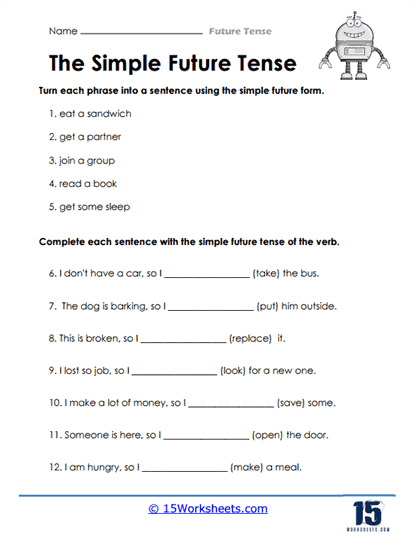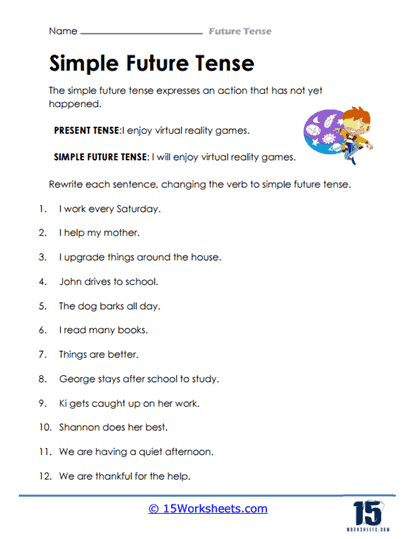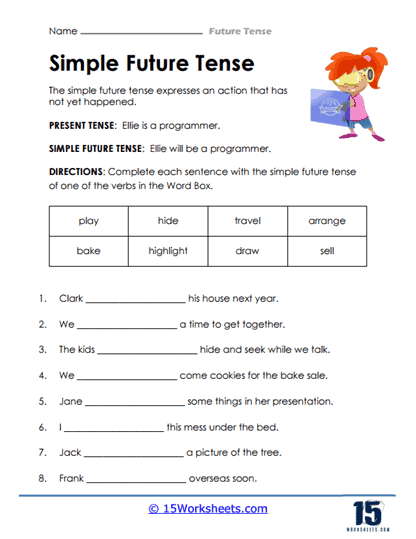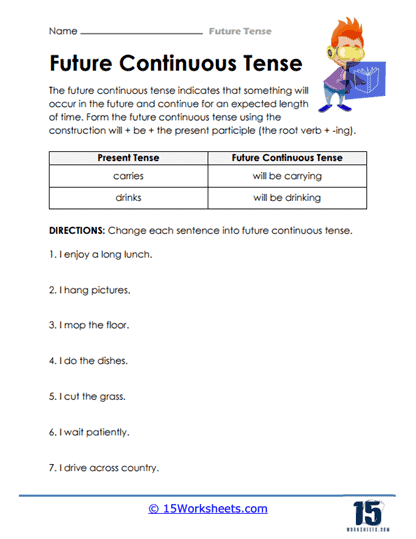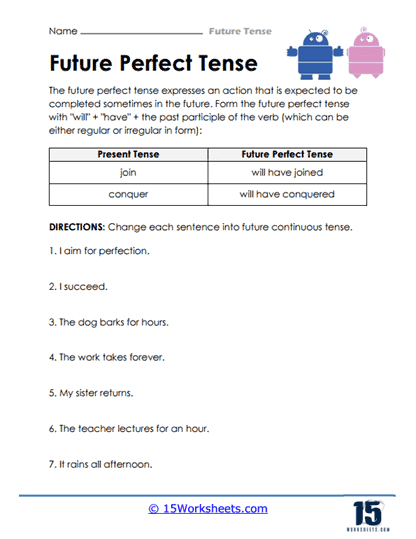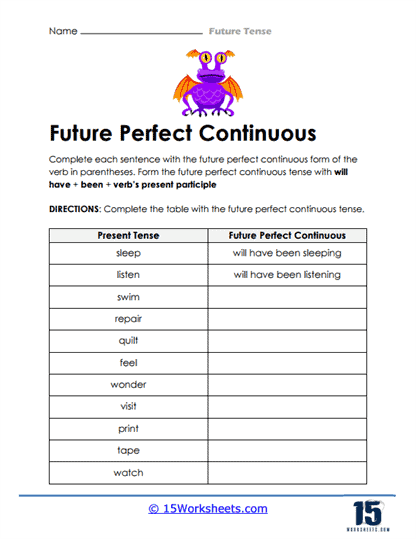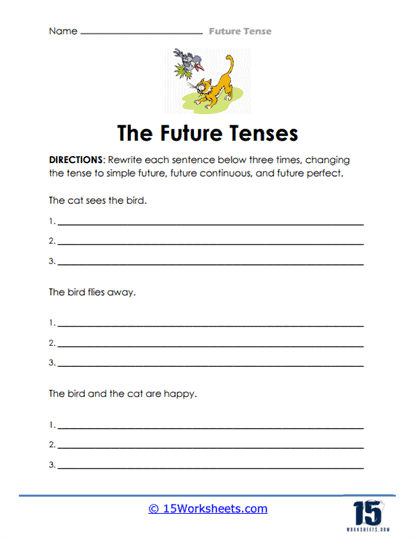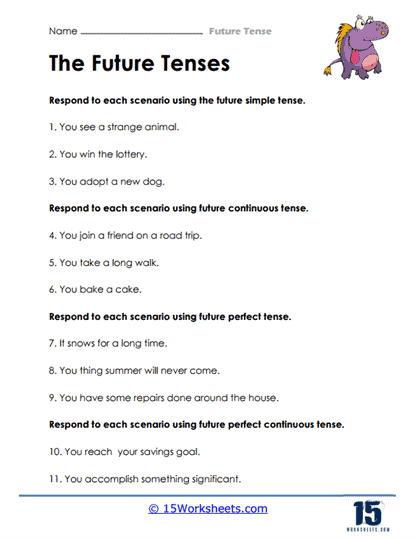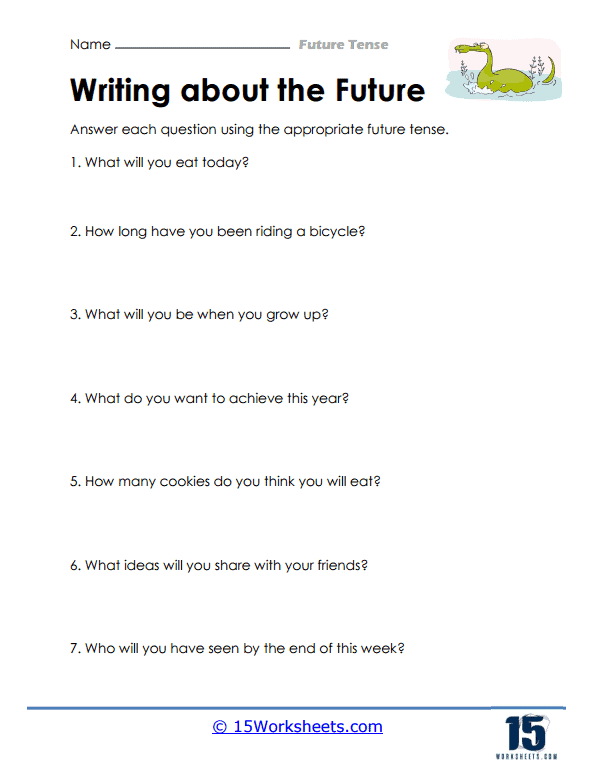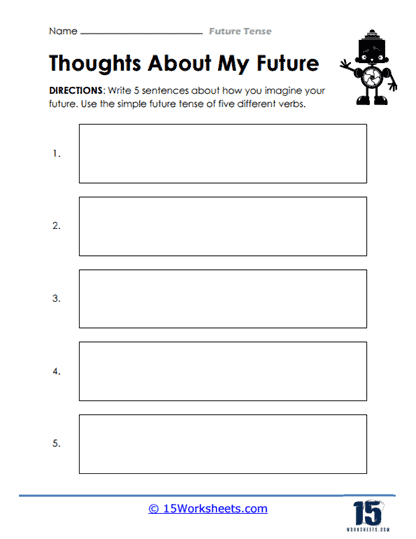Future Tense Worksheets
All About These 15 Worksheets
These future tense worksheets help students understand and use the different forms of the future tense in English. The future tense is used to talk about actions or events that will happen in the future, and there are several different ways to express the future tense in English.
These worksheets include a variety of exercises to help students identify and use different forms of the future tense correctly. Some examples of these exercises include:
- Verb conjugation exercises – Students practice conjugating verbs in the future tense.
- Sentence completion exercises – Students complete sentences using the correct form of the future tense.
- Sentence transformation exercises – Students rewrite sentences to change their verbs into the simple future, future continuous, and future perfect tense.
- Scenario response exercises – Students respond to hypothetical scenarios by writing sentences using the future simple, future continuous, future perfect, and future perfect continuous tense.
- Writing exercises – Students write their own sentences using the future tense.
In addition to these exercises, some of these worksheets also include explanations and examples of the different forms of the future tense to introduce students into the topic first. By answering these worksheets, students will:
- Conjugate verbs into the different forms of future tenses;
- Construct their own sentences with verbs in various forms of future tenses;
- Master transforming sentences into the simple future, future continuous, future perfect, and future perfect continuous tenses;
- And craft their own responses to questions and various hypothetical scenarios using all forms of future tenses.
Overall, these worksheets on future tense provide students with an opportunity to practice and reinforce their understanding of the different forms of the future tense in English. Through these worksheets, teachers can help their students improve their ability to communicate about future events with accuracy and confidence.
What are the different forms of the future tense?
The future tense is a verb tense used to describe actions or events that will happen in the future. In English, there are several ways to express the future tense, including:
- Simple Future Tense – This is the most common way to express future actions in English, and is formed by using the auxiliary verb “will” or “shall” with the base form of the main verb. For example: “I will go to the store tomorrow.”
- Future Continuous Tense – This tense is used to describe an action that will be ongoing in the future. It is formed by using the auxiliary verb “will be” + the present participle (-ing) form of the main verb. For example: “They will be studying all day tomorrow.”
- Future Perfect Tense – This tense is used to describe an action that will be completed at a specific point in the future. It is formed by using the auxiliary verb “will have” + the past participle form of the main verb. For example: “By next year, I will have graduated from college.”
- Future Perfect Continuous Tense – This tense is used to describe an ongoing action that will be completed at a specific point in the future. It is formed by using the auxiliary verb “will have been” + the present participle (-ing) form of the main verb. For example: “By the time you arrive, I will have been working on this project for two hours.”
By practicing and using these different forms correctly, teachers can help their students improve their ability to communicate about future events with clarity and precision.




